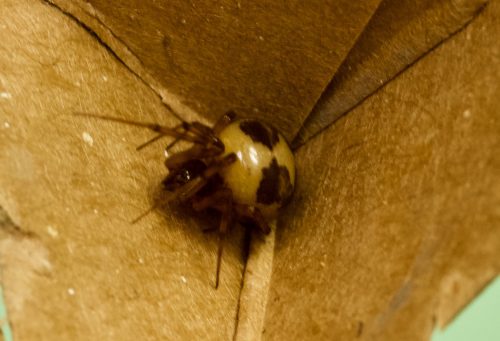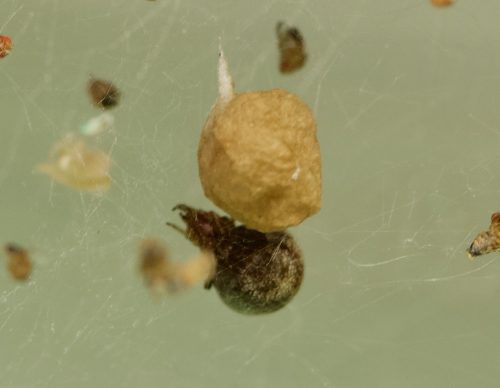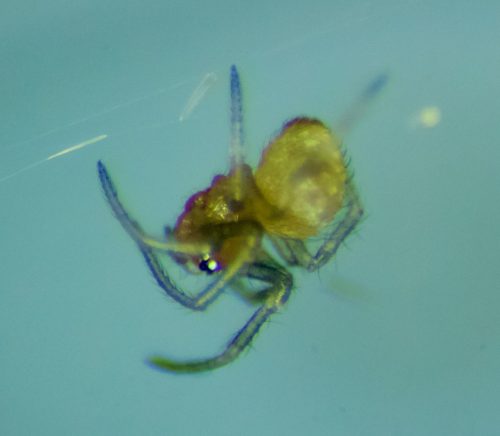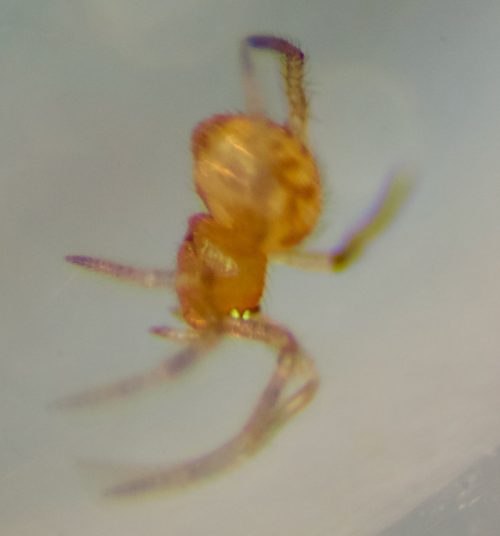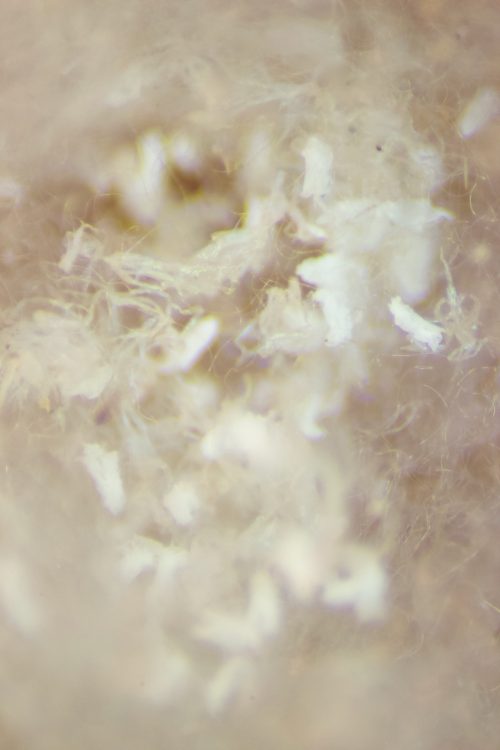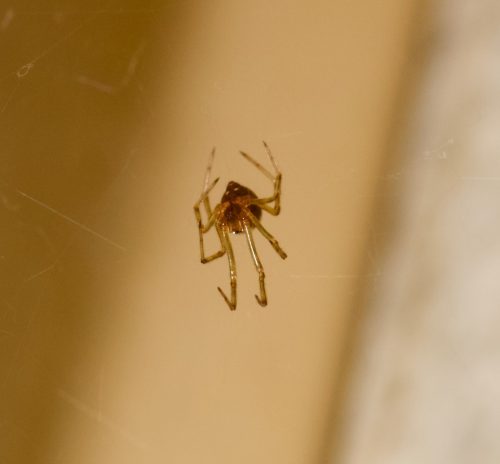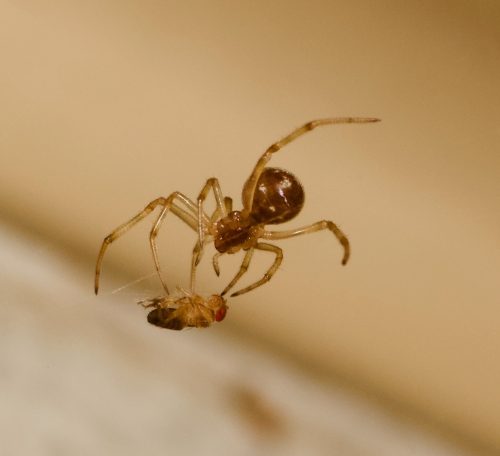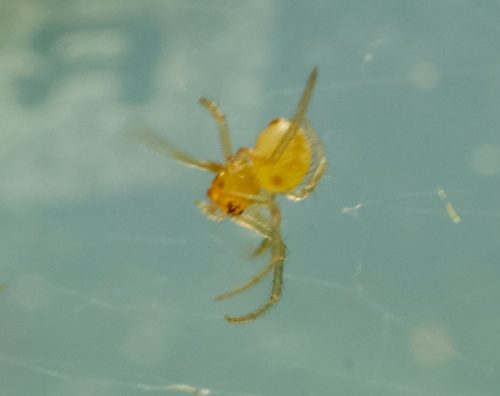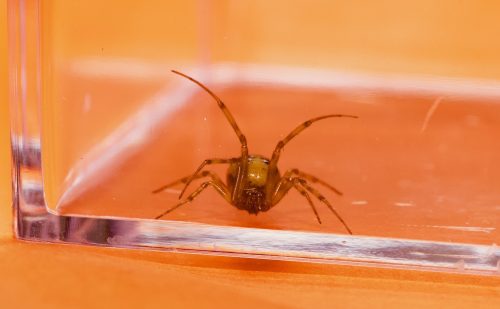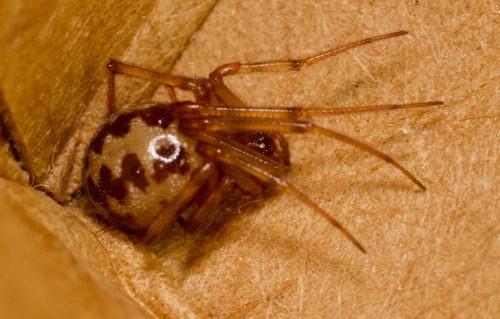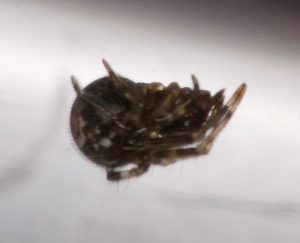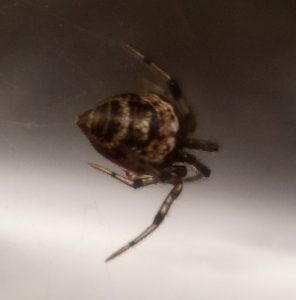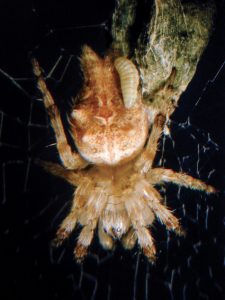But I don’t think my spiders would be able to move. Look at Texanne here; she’s so bloated she’s not going to step out of that corner, I don’t think.
A few others are purging themselves into egg sac construction.
Anyway, I’ll check on them tomorrow, and as soon as they get active again I’ll throw them some more bugs full of ichor. The menu for Monday is mealworms.

